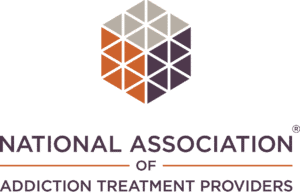Creating a Mental Health Toolbox

Life is a journey encompassing a myriad of experiences, both joyous and challenging. While we eagerly embrace the highs, we may often find ourselves feeling overwhelmed or ill-prepared for the lows. Creating a mental health toolbox is an invaluable way to proactively equip ourselves with the necessary tools and techniques to navigate the complexities of life and foster emotional well-being and resilience.
With a proactive approach to mental health, an individual can develop personal coping mechanisms, healthy habits, and a support network, enabling them to weather the storm and emerge stronger. In this article, we will explore the key components of creating a mental health toolbox that will empower you to thrive, irrespective of life’s challenges.
Why Do You Need a Mental Health Toolbox?
Taking Control of Your Emotional Well-being
Have you ever found yourself at a loss for how to effectively manage stress, anxiety, or other emotional challenges? By creating a mental health toolbox, you take control of your emotional well-being. Just as one cannot predict every obstacle that life may present, being equipped with an array of coping strategies ensures you are prepared to face any challenges head-on.
Building Emotional Resilience
Resilience is the ability to bounce back from adversity and navigate through life’s difficulties. A mental health toolbox is a vehicle to cultivate resilience as it helps you discover, develop, and implement strategies that foster emotional strength and adaptability. The more tools at your disposal, the better equipped you are to endure setbacks and emerge stronger.
Building Your Mental Health Toolbox
Self-Awareness: The Foundation of Emotional Well-being
Self-awareness is the cornerstone of creating a mental health toolbox. This crucial first step involves understanding your emotions, triggers, needs, and strengths. Cultivating self-awareness empowers you to respond to challenging situations rather than react impulsively. Here are techniques to enhance self-awareness:
- Daily Reflection Practice: Carve out time each day to reflect on your emotions, experiences, and thoughts. Jotting them down in a journal can provide invaluable insights into patterns and triggers.
- Mindfulness and Meditation: Engage in mindfulness exercises, such as deep breathing or guided meditation, to quiet the mind and become attuned to your present-moment experience.
- Seek Feedback: Trustworthy friends, family members, or a therapist can offer objective perspectives and help you understand blind spots in your self-awareness journey.
Identifying Coping Strategies
Every individual is unique, and so are their coping mechanisms. It’s essential to identify strategies that resonate with you and cultivate a diverse range of tools that address various aspects of your emotional well-being. Here are some approaches to consider:
- Physical Activity: Engaging in regular exercise releases endorphins, reduces stress, and improves overall mood. Find an activity that brings you joy, whether it be jogging, yoga, dancing, or any other form of movement.
- Creative Expression: Explore creative pursuits such as painting, writing, music, or crafting, as they provide a healthy outlet for emotions and allow for self-expression.
- Social Support: Cultivate meaningful relationships and nurture a support network that offers understanding, empathy, and encouragement during challenging times. Seek comfort in sharing your experiences and listening to others’ stories.
- Mind-Body Techniques: Incorporate mind-body approaches like deep breathing exercises, progressive muscle relaxation, or aromatherapy to alleviate stress and promote relaxation.
Creating Healthy Habits
In addition to coping strategies, fostering healthy habits is vital for maintaining emotional well-being. These habits play a significant role in supporting mental health by establishing a strong foundation for resilience. Consider incorporating the following practices into your routine:
- Sleep Hygiene: Prioritize quality sleep and create a soothing bedtime routine to enhance overall well-being. Maintain a consistent sleep schedule, create a calming environment, and limit exposure to electronic devices before bed.
- Balanced Diet: Nourish your body and mind with a well-balanced diet rich in essential nutrients. Make conscious choices, opting for whole foods that support brain health and mood stability.
- Stress Management: Practice stress reduction techniques, such as time management, setting boundaries, and engaging in activities that bring you joy and relaxation.
- Self-Care: Care for yourself by engaging in activities that invoke joy, self-compassion, and self-care. Practice setting aside dedicated time for activities you love, whether it’s reading, taking a relaxing bath, or enjoying a hobby.
FAQs
How do I know if my mental health toolbox is effective?
Regular self-reflection, monitoring your emotional well-being, and seeking professional guidance if needed can help evaluate the effectiveness of your mental health toolbox. If your coping strategies empower you to navigate challenges and maintain emotional well-being, it indicates a well-rounded toolbox.
Can I share my mental health toolbox with others?
While everyone’s mental health toolbox is uniquely personal, sharing strategies and experiences can be valuable for building support networks and normalizing conversations around mental health. Remember, what works for you may not work for everyone, and vice versa.
Conclusion
Creating a mental health toolbox is a powerful step towards enhancing emotional well-being and building resilience in the face of life’s challenges. By cultivating self-awareness, identifying coping strategies, and embracing healthy habits, you equip yourself to tackle adversity with grace and emerge stronger.
We invite you to embark upon this journey of self-discovery and empowerment, harnessing the infinite potential within you to create a mental health toolbox that is uniquely yours.










